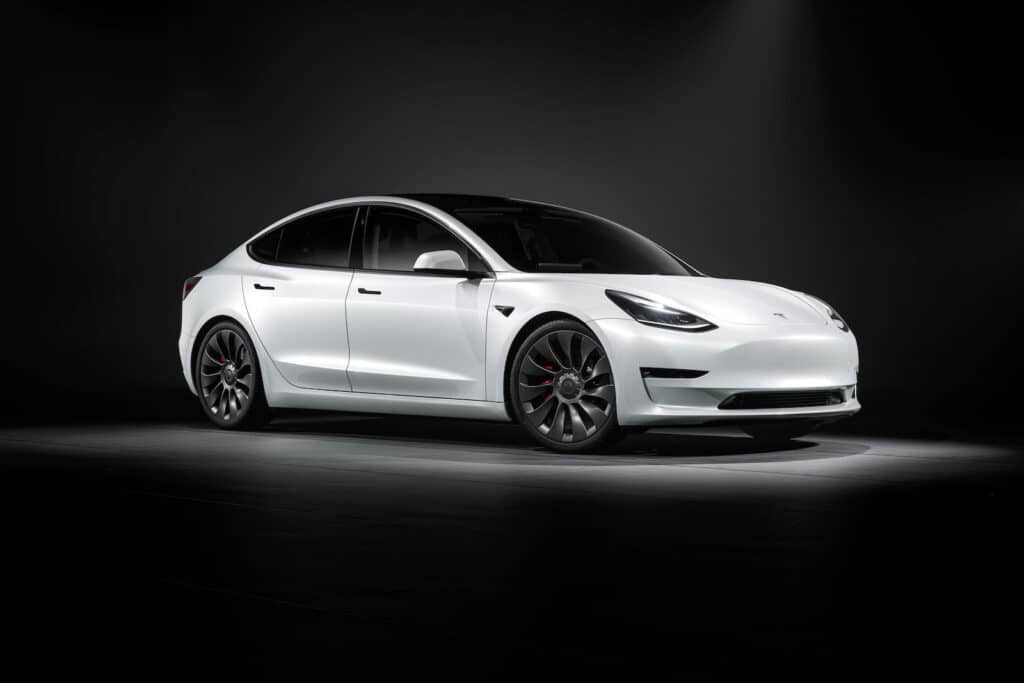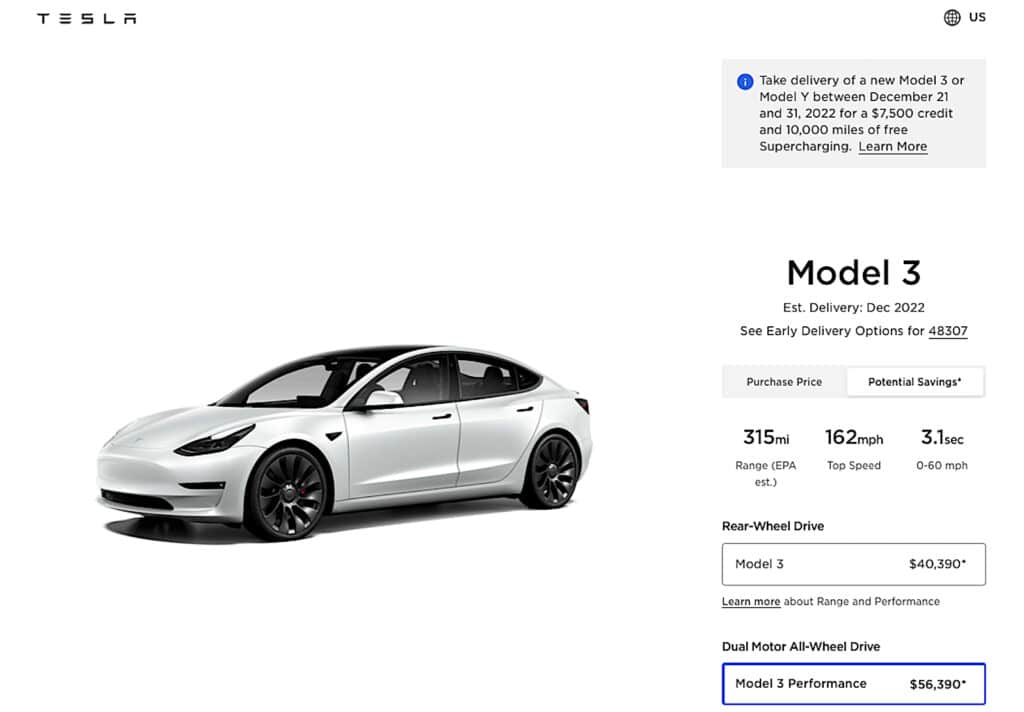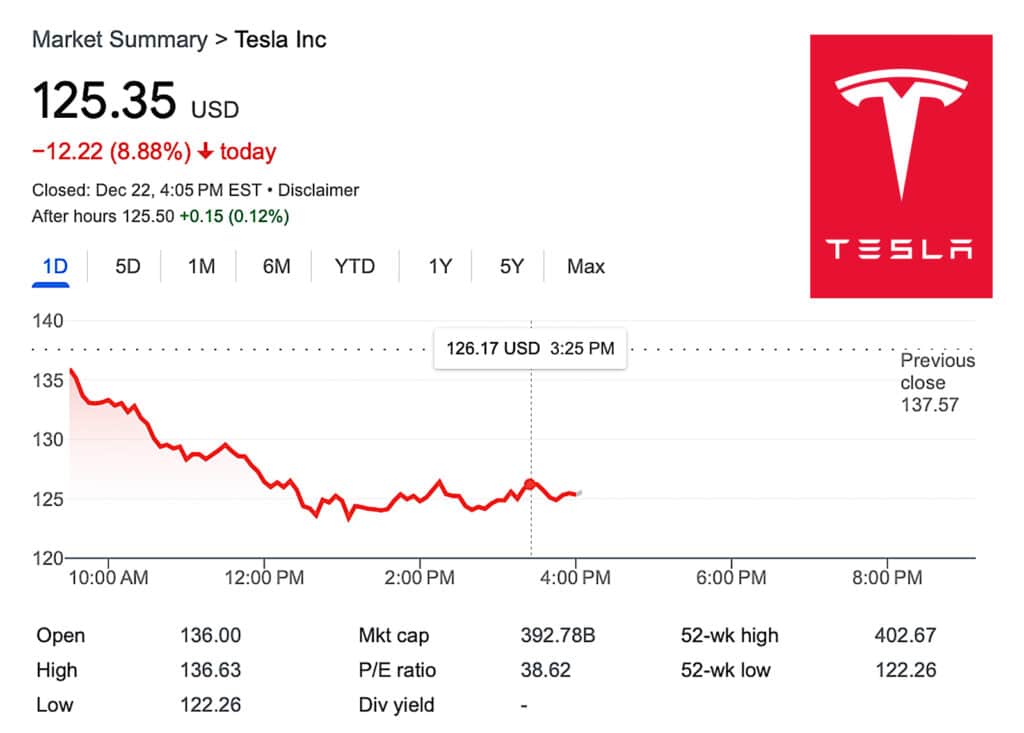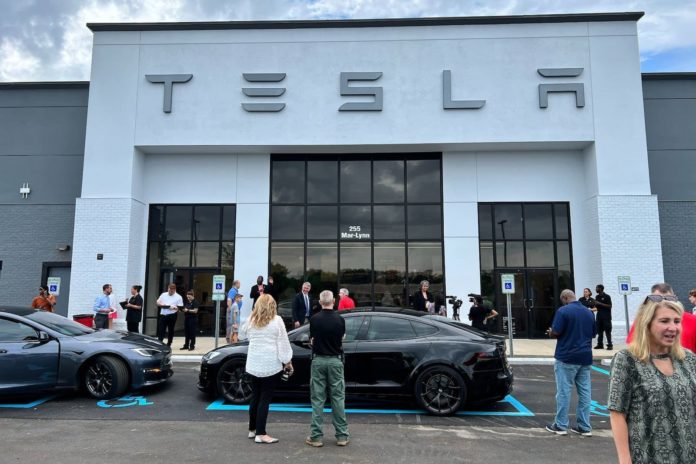Tesla is dangling new incentives worth up to $7,500 in front of potential EV buyers as the automaker rushes to meet sales targets before the end of the year — but the move is not winning over those buying Tesla’s already pummeled stock.
Now down more than 60% since CEO Elon Musk announced his $44 billion bid for Twitter last April, shares traded under the Nasdaq ticker TSLA were off by as much $15.31 in Thursday afternoon trading. In turn, Tesla’s market capitalization slid below $400 billion for the first time in several years, meaning it has now lost about $800 billion in value in just eight months.
A number of factors, including macroeconomic issues, have been blamed by analysts for the sharp downturn this year. But Musk has been catching much of the blame for the way his takeover of Twitter backfired.
The deal is raising potential legal issues, and unquestionably muddied Musk’s once-vaunted reputation as maverick “genius.” But his behavior in recent months has also tarnished the image of Tesla itself and, with numerous current owners and potential buyers saying they’ll steer clear of its products, that may have been a factor behind the new incentive program. But new tax rules that were expected to come into effect next month are also seen influencing Tesla’s decision.
An unexpected incentive program
Whatever the specific reason, the announcement of new incentives comes during a year when parts and vehicle production shortages have led to a sharp cutback in the use of rebates and other consumer givebacks.

The new incentives cover Tesla’s two most popular product lines: the Model 3 sedan and Model Y SUV. The automaker had already announced $3,750 incentives for the two lines but has now doubled the givebacks.
The increased incentives will remain in effect through the end of this month.
With CEO Musk having promised an “epic finish to 2022, Tesla had been expected to make a hard push to boost year-end sales, as it has done numerous times in the past, to give its fourth-quarter and full-year sales and earnings a boost. But there is even more of a reason to do so now, several analysts speculated.
Missing the numbers
The company’s third-quarter figures were solid, with big gains in both the profit and vehicle delivery columns. Nonetheless, Tesla fell short of the consensus sales forecasts, something that subdued Wall Street’s otherwise-enthusiastic response.
There’ve been signs that things are slowing for Tesla as 2022 comes to a close — and not just in the U.S. While it’s having a good year in Europe since opening a new factory in Berlin, Chinese sales have weakened, according to local market watchers, triggering a decision to suspend production during the final week at its plant in Shanghai.
Back at home, demand for autos, in general are slowing, J.D. Power today forecasting a sharp drop for all of December. The EV market, in particular, is showing signs of cooling.

Competition heats up
But Tesla is facing a flood of new competitors, including established marques like Ford, General Motors and Hyundai, to new players such as Rivian and Lucid. Its market share for the first 10 months of 2022 dropped from 79% to a still dominant 73%, according to industry sales data. But the decline may be accelerating.
And analysts are closely watching to see if Musk’s political turn to the right — which he loudly proclaimed since completing the purchase of Twitter Oct. 28 — is showing signs of doing damage.
It hasn’t helped that the serial entrepreneur has targeted not only President Joe Biden and other Democratic leaders, but also Liberals, in general, as well as members of the LGBTQ community. They make up a large share of Tesla buyers, especially in California, the company’s largest market in the U.S., noted Sam Abuelsamid, principal auto analyst with Guidehouse Insights.
How long will the incentives run?
While the new Tesla incentives expire in little more than a week, the question is whether they will be extended. One reason would be to fill in for the $3,750 tax credits that were expected to start around the New Year as part of the federal Inflation Reduction Act.
Tesla benefited from the now-ending EV credit program but lost those incentives after crossing the 200,000-unit sales threshold several years ago. The IRA would restore some credits for the Texas-based company, though the new incentive program sets specific targets covering where a vehicle and its batteries are made — and even where it sources key minerals including lithium, nickel and cobalt.

Earlier this week, the U.S. Treasury Department announced it was delaying the release of the new rules for the IRA tax credits until March.
And when will the bad news for investors end?
Tesla can ill afford more bad news. Investors ignored comments Musk made on Wednesday when he suggested TSLA shares are a “bargain.”
As Thursday trading started coming to a close, Tesla shares again started to lose ground, with the day looking to see them just above $125, or nearly $13 off from the opening bell. The 52-week high was $402.67. Run the numbers and investors now value Tesla at around $394 billion. That’s still a healthy premium over competitors like GM, Ford, Volkswagen and even Toyota, but it’s down from about $1.2 trillion just before Musk made his unsolicited bid for Twitter.
As further embarrassment, Tesla is now back to where it traded when it was added to the Fortune 500 in 2017. And it has been passed in value by ExxonMobil. For Musk himself, he is now well out of position as the world’s richest man.

